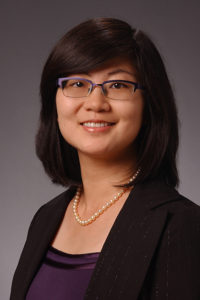Jin Liu, PhD

Associate Professor of Pharmaceutical Sciences
Education & Experience:
I received a BS in Chemistry from Peking University in Beijing, China, and a PhD in Computational Chemistry from The Ohio State University. I completed postdoctoral training at National Cancer Institute-Frederick, NIH. Prior to my current position, I have worked at U.S. Army Medical Research and Materiel Command, University of Texas Southwestern Medical Center, and held a faculty position at Southern Methodist University.
Teaching Areas & Interests:
I am experienced in undergraduate, graduate and postdoctoral education in computational chemistry, computational biology, biochemistry and medicinal chemistry. I am very interested in developing active learning strategies and have completed the Scientist Teaching Science Pedagogy Program at NIH. My teaching efforts in PharmD programs have focused mainly on medicinal chemistry. For research mentoring, I have had the opportunity to train undergraduate students, graduate students, and postdoctoral fellows.
Professional Activities & Awards:
I am a member of professional organizations including American Chemical Society (ACS), American Society for Biochemistry and Molecular Biology (ASBMB), Sigma Xi, and Biophysical Society. I have served as guest editor for the journal PLOS Computational Biology and as reviewer for several journals. The awards and honors that I have received include NIH Earl Stadtman Investigator finalist, NIH and ISGO Young Scientist Travel Award, Ray Travel Award and Albert L. Henne Research Award.
Scholarly Interests:
I am interested in understanding protein allosteric mechanisms and developing new therapeutic strategies for cancer and neurological diseases using computational chemistry and computational biology approaches. Allostery, as the communication of distinct sites in proteins, is an intrinsic property of many proteins for cell signaling. Allosteric drug design, targeting sites other than active sites, emerges as a novel way to design drugs for a wide range of diseases, offering distinct advantages over conventional drugs, such as increased selectivity, self-limiting activity, and fewer side effects. However, the complication of allosteric mechanism and the lack of strategies to identify allosteric sites remain big challenges to design allosteric drugs. Recently, I have developed novel computational methods to successfully identify allosteric sites, and forged collaborations with cancer biologists to develop allosteric drugs. My current and future research interests include developing allosteric drugs for cancer and neurological disorders, exploring mechanisms of neurotransmitter release machinery, and constructing novel 3D allosteric networks for next-generation drug design.


Social media